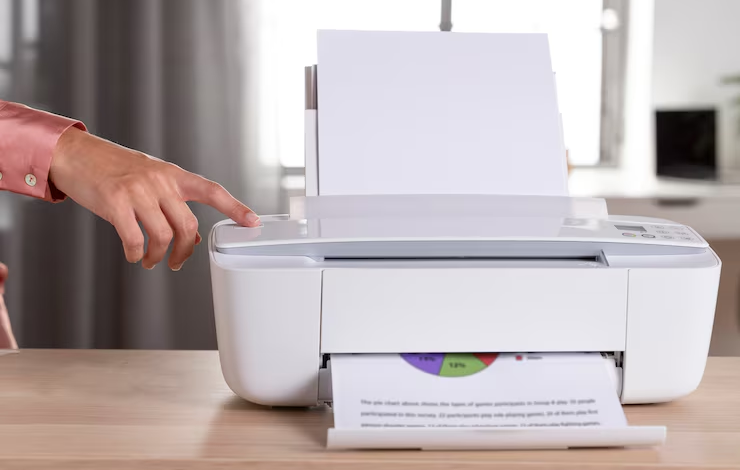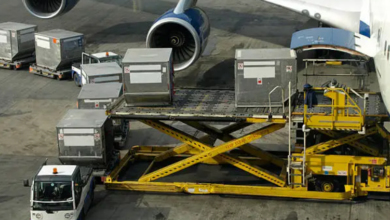LaserJet Printers vs Inkjet: Which is Right for Your Kenyan Business?

Picking the right printer for your business shouldn’t be this complicated. Yet here you are, staring at dozens of available online options, wondering which choice won’t come back to haunt your budget later.
The LaserJet printer versus inkjet debate has been going on for years. Both technologies work, but one might be slowly bleeding your business dry without you realising it.
What Nobody Tells You About Printing Costs
The sticker price tricks most people. Walk into any electronics shop in Nairobi, and you’ll see inkjet printers starting at around 8,000 KES. LaserJet models begin closer to 30,000 KES. The choice seems obvious until you start actually using the thing.
Here’s what happens next. That cheap inkjet needs new cartridges every month or two if you’re printing regularly. Each cartridge costs between 1,500 and 4,000 KES, and you need separate ones for black, cyan, magenta, and yellow. Do the maths. You’re looking at 6,000 to 16,000 KES every few months just for supplies.
LaserJet toner cartridges cost more upfront, maybe 5,000 to 12,000 KES each. But one cartridge prints 2,000 to 10,000 pages, depending on your model. That inkjet cartridge might give you 300 to 500 pages if you’re lucky.
Your cost per page tells the real story. Inkjet printing costs roughly 3 to 8 KES per page when you factor in all cartridges. LaserJet brings that down to 1 to 3 KES per page for most documents.
Speed Becomes Critical During Busy Periods
Think about your busiest days. Quarter end reports, client proposals, invoices that need to go out before 5 PM. Your team queues around a slow printer while deadlines approach.
Most business inkjet printers manage 10 to 15 pages per minute on a good day. Printing 200 pages takes nearly 20 minutes, assuming nothing jams or runs dry halfway through.
A mid-range LaserJet printer handles 25 to 40 pages per minute consistently. The same 200 page job finishes in 5 to 8 minutes. That’s the difference between staying late and catching your matatu home on time.
Inkjet printers also struggle with consistency. The first page looks fine, but by page 50, you might notice fading or streaking. LaserJet quality stays consistent from first page to last.
Professional Appearance Matters More Than You Think
Your printed documents represent your business. Clients notice quality, even if they don’t comment directly.
Inkjet prints look decent on high quality paper, but regular 80gsm office paper shows their weaknesses. Text edges appear slightly fuzzy. Colours can bleed if humidity is high, which happens frequently in coastal Kenya. Touch a page too soon and you’ll smudge the ink.
LaserJet output stays sharp on any paper type. The toner fuses to the paper during printing, creating permanent, smudge-proof text and graphics. Documents maintain their professional appearance for years.
The Dust Problem Everyone Ignores
Nairobi’s dusty environment kills electronics faster than most places. Dust gets inside printers and causes havoc.
Inkjet printers suffer more from contamination. Their wet ink system attracts dust particles, creating clogs in the tiny nozzles. You’ll spend time running cleaning cycles that waste expensive ink or dealing with streaky prints that look unprofessional.
Modern LaserJet printers handle dust better. The toner cartridge design keeps the printing mechanism sealed. Less dust means fewer problems and longer equipment life.
Power consumption deserves mention, too. Yes, LaserJet printers use more electricity while printing, typically 400 to 600 watts versus 15 to 30 watts for inkjet. But they finish jobs faster and have better.Monthly power bills rarely show significant differences for typical office use.
When Inkjet Still Makes Sense
Don’t assume LaserJet always wins. Inkjet printers excel at photo printing and detailed colour graphics. Marketing agencies, architecture firms, or any business that regularly prints high-quality colour materials might prefer inkjet for those specific tasks.
Some businesses choose a hybrid approach. LaserJet is used for daily documents, and separate colour inkjet is used for special projects. This costs more initially but provides flexibility.
Volume matters most in your decision. Print fewer than 200 pages monthly? Either technology works, though inkjet costs more per page. Print 500 to 2,000 pages monthly? LaserJet is clearly becoming more economical. Print over 2,000 pages monthly? Inkjet becomes financially painful.
Reliability Affects Your Bottom Line
Equipment downtime costs money. Every hour your printer sits broken is an hour your team can’t complete tasks efficiently.
Inkjet printers need more maintenance. Print heads clog regularly, especially if you don’t print frequently. Ink dries up in cartridges even when you’re not using them. Alignment problems create waste as you reprint documents.
LaserJet printers are built for consistent operation. Toner doesn’t dry out like ink. The main maintenance involves replacing drum units every 20,000 to 50,000 pages, depending on usage. That might be once or twice yearly for most businesses.
Making Your Decision
Consider your actual printing patterns, not just current needs. Most businesses underestimate their printing requirements as they grow.
Calculate total ownership costs over two years, including equipment, supplies, maintenance, and your time dealing with problems. Factor in your document types and quality requirements.
For most Kenyan businesses handling primarily text documents, invoices, reports, and correspondence, LaserJet technology provides better long-term value. The higher initial investment pays back through lower operating costs and increased reliability.
Your business deserves equipment that supports growth rather than creating bottlenecks. Choose based on facts, not just the tempting low price tag.




